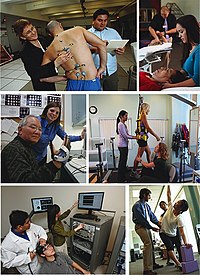
Photo from wikipedia
Abstract In the 1900s as Edwardian women musicians moved from music teaching into public performance, cinemas offered a safe place: out of the spotlight and in the relative anonymity of… Click to show full abstract
Abstract In the 1900s as Edwardian women musicians moved from music teaching into public performance, cinemas offered a safe place: out of the spotlight and in the relative anonymity of the darkened auditorium. The rapid growth in cinemas from the 1910s also meant that women were needed to fill the demand for ensembles, pianists, and vocalists, a demand that greatly increased during World War I however, women faced successive waves of backlashes and debates about their abilities played out in the music and popular press, in trade and fan magazines, and in the Musicians’ Union. Evidence of women’s experience can also be gleaned from personal testimony, diaries, and autobiography, but this is piecemeal and represents only a fraction of what was a considerable occupation for women. Focusing on cinema musicianship, this article will examine the battles for women entering the profession between 1900 and 1930.
Journal Title: Popular Music and Society
Year Published: 2017
Link to full text (if available)
Share on Social Media: Sign Up to like & get
recommendations!